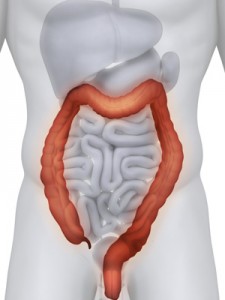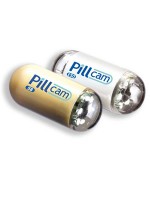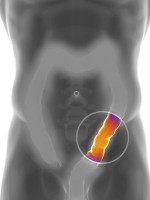Call us today: 1 (210) 615-8308

Medical Procedures
At the Gastroenterology Clinic of San Antonio, we know that the prospect of having an outpatient procedure can sometimes produce anxiety and uncertainty. As a way of reducing your stress, we invite you to learn more about your scheduled procedure by clicking on the appropriate link on the right side of this page.
You’ll learn what is involved in the procedure, why it is being performed, what can be expected and how long it might take. We hope that this information will be helpful as you and your family prepare for your procedure, and remember, our physicians and staff are always available to answer your questions and address your concerns.
-
Colon Cancer Screening
Colon cancer affects 134,000 people per year in the United States and causes the death of 55,000 patients per year. This makes colon cancer the #2 cancer killer in the United States. Almost all colon cancers start out as a polyp on the inside wall (lumen) of the colon. Polyps start out as small wart-like bumps the size of an unground peppercorn. Learn more…
-
 Colonoscopy
Colonoscopy
Colonoscopy is a procedure that enables your physician to examine the lining of the colon (large bowel) for abnormalities by inserting a flexible tube into the anus and advancing it slowly into the rectum and colon. The endoscope has its own video camera and light source, and is about the thickness of your finger.
-
EGD: Upper GI Endoscopy
EGD (also known as upper GI endoscopy or panendoscopy) is a procedure that enables your physician to examine the lining of the upper part of your gastrointestinal tract, i.e., the esophagus (swallowing tube), stomach and duodenum (first portion of the small intestine) using a thin flexible tube with its own video camera and light source. EGD is usually performed to evaluate symptoms of persistent upper abdominal pain, nausea, vomiting or difficulty swallowing. It is also the best for finding the cause of bleeding from the upper gastrointestinal tract. EGD is more accurate than x-ray films for detecting inflammation, ulcers or tumors of the esophagus, stomach and duodenum. Upper endoscopy can detect early cancer and can distinguish between benign and malignant (cancerous) conditions when biopsies (small tissue samples) of suspicious areas are obtained.
-
Hemorrhoid Banding
Patients may typically have 3 sets of hemorrhoids at as many as three sites. Our recommended treatment protocol calls for banding only one hemorrhoid per visit, as multiple bandings have been shown to significantly increase the rate of complications and pain. Subsequent appointments are scheduled at two week intervals with a final check-up and optional colorectal cancer screening a few weeks later.
Band placement takes only 30 seconds to 1 minute with our device. Patients typically do not require any sort of prep, and the procedure is done without sedation with the patient in the left side. The rubber band strangulates the hemorrhoid tissue, causing it to necrose and fall off within a couple of days. Extremely large hemorrhoids may require multiple bandings. Learn more…
-
 Small Bowel Capsule Endoscopy
Small Bowel Capsule Endoscopy
Capsule endoscopy with PillCamTM SB video capsule enables your doctor to examine your entire small intestine. Your doctor will have you ingest a vitamin-pill sized video capsule, which has its own camera and light source. During the 8 hour exam, you are free to move about. While the video capsule travels through your body, it sends images to a data recorder you will wear on a waist belt. Most patients find the test comfortable. Afterwards your doctor will view the images on a video monitor. Learn more…
-
48 Hour pH Probe
48 Hour Bravo pH probe is a procedure that enables your physician to detect the presence of acid refluxing into the esophagus. It is done by passing a thin flexible catheter into the esophagus while you are asleep and sending you home for 48 hours. Learn more…
-
Esophageal Manometry
Esophageal manometry is a procedure that enables your physician to measure the function of the esophagus (swallowing tube). It is done by passing a thin flexible catheter into the esophagus. Learn more…
-
Helicobacter pylori
Helicobacter pylori (H.pylori) is a bacteria which lives only in the lining of the stomach and is one of the most common chronic infections in humans. The importance of H. pylori was unrecognized until 1982, when an Australian physician, Dr. Barry Marshall, discovered that the germ was almost always present in patients with gastritis (inflammation of the stomach) and ulcers. Doctors now believe that H. pylori is associated with most stomach ulcers and almost all duodenal ulcers. Learn more…
-
Lactose Breath Test
This test evaluates for Lactose Maldigestion which leads to poor tolerance of milk products. Learn more…
-
Fructose Breath Test
This test evaluates for Fructose Malabsorption, which can cause the onset of common gastrointestinal symptoms, such as bloating, cramping and diarrhea. These symptoms arise when the fructose is allowed to pass through the digestive tract to the colon, where some bacteria can use the sugar as a food source. Unfortunately, in the process, hydrogen gas is liberated. Learn more…
-
Bacterial Overgrowth Breath Test
Your Doctor has arranged this test to evaluate for bacterial overgrowth, in your small bowel intestine. Learn more…
-
 Flexible Sigmoidoscopy
Flexible Sigmoidoscopy
Flexible sigmoidoscopy is a procedure that enables your physician to examine the lining of the rectum and a portion of the colon (large bowel) by inserting a flexible tube that is about the thickness of your finger into your anus and advancing it slowly into the rectum and lower part of the colon. Learn more…








